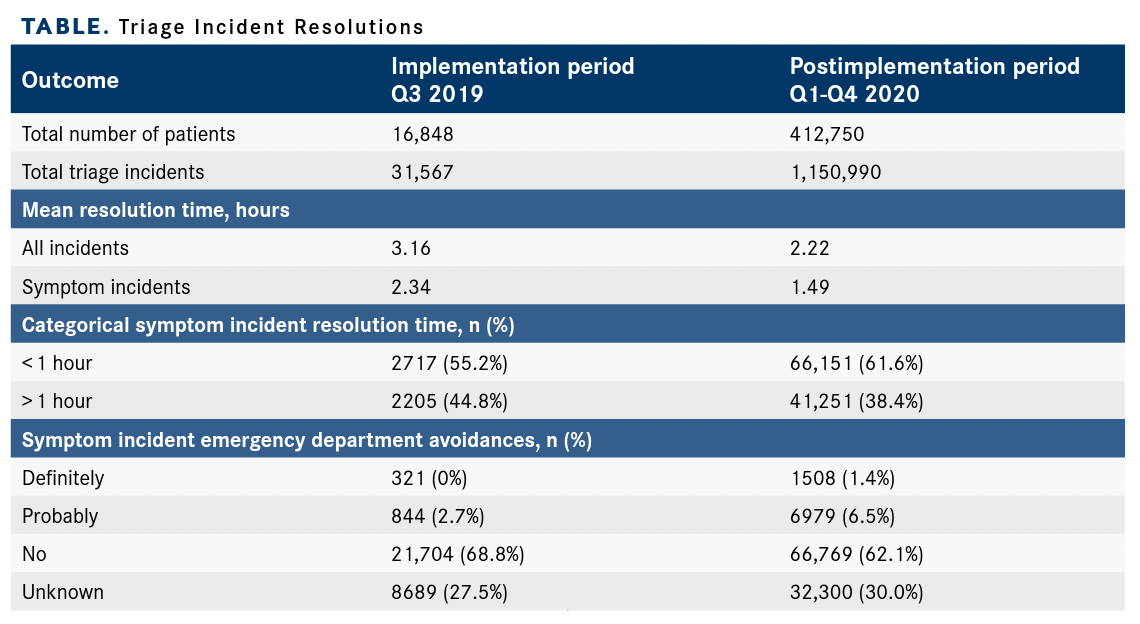Article
Digital Health and Process Improvements Enhance Community-Based Patient Care
Author(s):
A marked reduction in hospitalizations and emergency department visits are key metrics for value-based care programs. Quality improvement processes and electronic patient management systems may give practices a way to fully embrace these programs and remain mindful of cost while ensuring that patients receive high-quality care.
Lalan S. Wilfong, MD

A marked reduction in hospitalizations and emergency department (ED) visits are key metrics for value-based care programs. Quality improvement processes and electronic patient management systems may give practices a way to fully embrace these programs and remain mindful of cost while ensuring that patients receive high-quality care.
Investigators at Texas Oncology, a member of The US Oncology Network, piloted a quality initiative to evaluate health care resource use.1 A review of the data revealed that the majority of hospitalizations and ED visits occurred during normal business hours. Texas Oncology investigators considered various options aimed at improving outcomes, such as extended hours, but decided to first determine why patients were opting for visits to the ED when a visit to the clinic may have met their needs.
A second issue worthy of investigation was patient complaints regarding the timeliness of returning phone calls. Changes implemented at the practice prioritized improving the management of patient calls, and required comprehensive insight into call volumes, nurse burden, and callback times. Without a practice-wide system to monitor and track calls across different locations the statewide cancer care provider, which has more than 200 locations and more than 500 physicians, sought to implement uniform systems and procedures.
Once they had determined that delayed callback times often led to ED visits for symptoms that could be managed in the clinical setting, the Texas Oncology investigators began searching for a solution to improve callback timeliness. Their search culminated in a highly successful collaboration with Navigating Cancer, a health care technology company with an electronic patient management system to efficiently track, monitor, and triage patient calls.
Executing the Solution
Navigating Cancer’s oncology-specific digital health technology includes a care management platform that integrates clinic workflows, enabling staff to easily document, track, and escalate all inbound patient outreach. Overall, the system enables more seamless communication between patients and care providers when patients are away from the clinic. Its implementation was conducted in a stepwise manner across Texas Oncology’s 200-plus locations, beginning in Q3 of 2019 and being completed in Q1 2020. To evaluate improvement in incident resolution times, an implementation study was launched, tracking resolution times for all incidents through December 2020.
For each practice’s locations, call volume was estimated based on clinic volume; triage nurses and operators were reallocated or hired accordingly. Incoming calls were entered into the Navigating Cancer dashboard as incidents. Operators then followed system-generated prompts and routed calls to the appropriate staff based on symptom priority. Incident volume and resolution times were tracked by the system.
Practice leadership recommended callback time thresholds, aiming for a less than 90-minute resolution for symptom-related incidents. A root cause analysis of delays in callback times was conducted at each location. Plan-Do-Study-Act (PDSA) cycles were instituted and quality improvement processes implemented. For example, improving communication between triage nurses and physicians during clinic hours was a common theme that required changes in communication styles at various locations. Ongoing monitoring and tracking of resolution times enabled a continuous cycle of quality improvement.
The electronic care management platform also allowed the practice to continue the initiative during the COVID-19 pandemic, as staff were able to work remotely. If a potential ED visit was avoided, nurses documented the information and these data points allowed the practice to establish comprehensive strategic action plans for quality improvement.
Solution Drives Dramatic Improvements
TABLE. Triage Incident Resolutions

Navigating Cancer’s technology solution addressed more than 1 million incidents for more than 400,000 patients in just 1 year (TABLE). The results of the implementation were impressive, especially as the pandemic was disrupting health care at the same time. A few of the most noteworthy findings include the following:
- Significant growth occurred in the volume of inbound calls to the practice from the first half of the year to the second, likely a consequence of the shift to more remote care during the pandemic.
- Callback times improved by more than 2 hours from the start of the implementation process to the end. This demonstrates the success of PDSA cycles and the collaboration between the practice and Navigating Cancer to continuously drive process and technology improvements.
- More than 60% of symptom-related issues were addressed in less than 1 hour—a significant improvement for Texas Oncology.
- Eight percent of symptom-related incidents resulted in definite or probable ED avoidances following assessment by a nurse. Shortness of breath, vomiting, chills, and weakness were the top symptoms addressed for ED avoidance.
Using Data to Build Quality Initiatives
The Navigating Cancer system created robust data to drive quality improvements and provide a foundation for future initiatives. For instance, data played a key role in PDSA cycle improvements, with data from each location being made available to practice directors at all locations. This created friendly competition and drove improvement, as no one wanted to be last on the list.
The investigators are examining data to identify other possible improvements. They are scrutinizing the types of calls to determine whether anything should be done differently based on patient symptoms and outcomes. This includes, for example, how the system could be optimized to appropriately triage and resolve 1 patient’s report of pain vs another patient’s report of nausea and vomiting.
The investigators are also evaluating data for call routing to develop strategies to improve processes. Patients often ask for a nurse regardless of the issue, as they know the nurse will return their call. By making sure operators have the right tools to route calls appropriately, nurses will only address nursing-specific calls. Other calls will be routed to the appropriate staff for scheduling issues or financial concerns, among other issues, increasing efficiency in all areas.
Members of Texas Oncology and Navigating Cancer will evaluate the effect of their system against health care resource utilization, measuring both ED visits and hospitalizations. As data are often delayed, information will most likely not be available for analysis until next year.
Focusing on Improvement Activities Can Drive Better Care
Tackling a problem such as ED visits during business hours requires a deep dive into why patients go in the first place and what can be done to address adverse effects before they become unmanageable.
During this program callbacks were not happening promptly enough, resulting in patients visiting the ED rather than the clinic. Despite tremendous growth in calls and issues during the tracking period, implementing the Navigating Cancer solution and ongoing quality improvement strategies allowed the practice to shorten callback times. Such focused attention on improvements demonstrated that positive changes, even during a global pandemic, are possible. Based on nurse assessment, this improvement is showing trends toward reduced ED visits and hopefully will be verif ied based on claims data sets.
The successful implementation of the Navigating Cancer solution is a great example of how technology empowers practices to provide better care, improve outcomes, and reduce resource utilization. Texas Oncology’s use of this digital technology to shorten callback times enables patients to be treated in the clinic by a care team they know and trust, rather than experiencing a costly and sometimes distressing ED or hospital visit.








